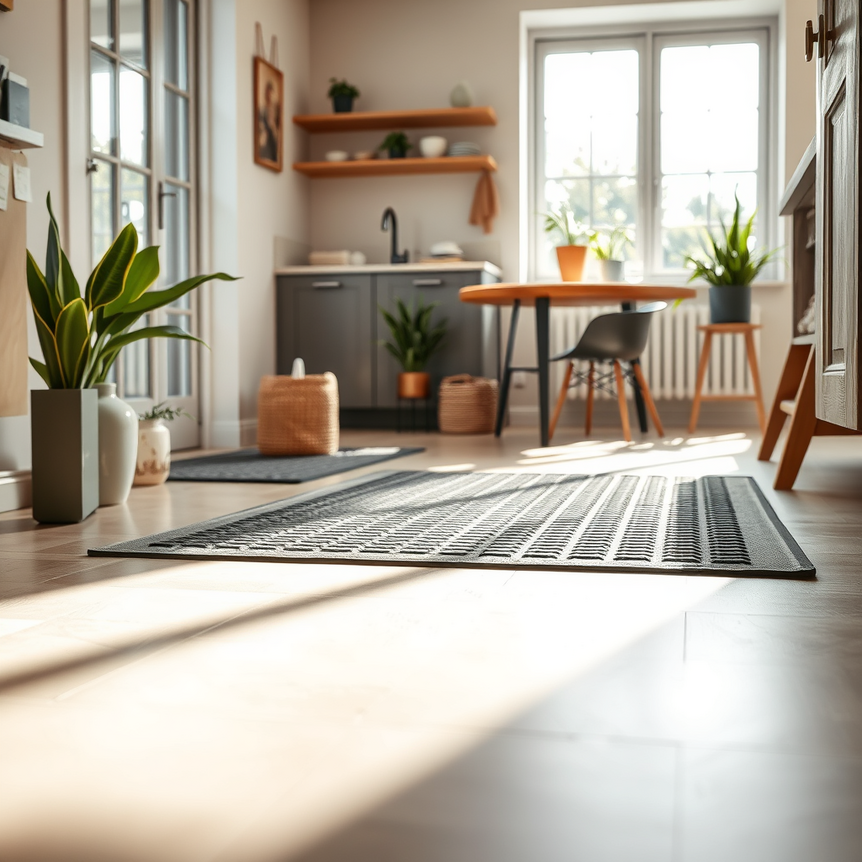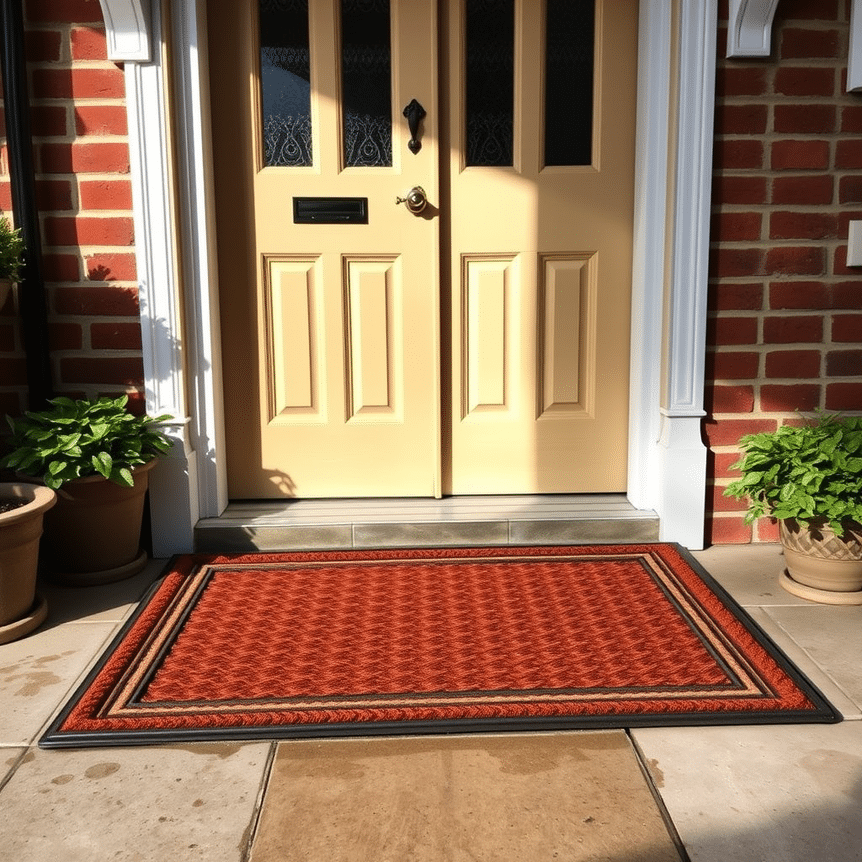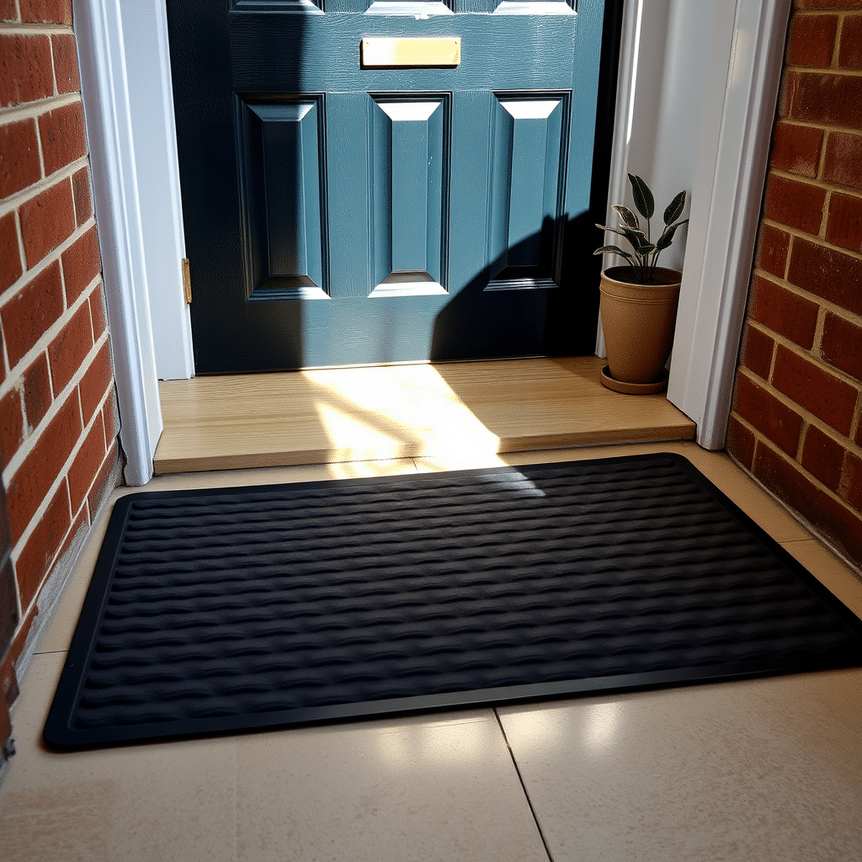In an era where sustainable living is no longer a niche choice but a global imperative, every decision we make within our homes contributes to our collective environmental footprint. From the energy we consume to the products we choose, modern households are increasingly seeking ways to minimise their impact. Among the most practical and impactful choices for a greener home are eco-friendly rubber mats. These versatile, durable, and sustainable solutions offer a myriad of benefits that extend far beyond simply protecting your floors, enhancing safety, and promoting a healthier indoor environment. For UK homeowners and renters alike, integrating these mats into your living spaces is a smart investment in both your household’s well-being and the planet’s future.
The Foundation of Sustainability: Reducing Your Household’s Carbon Footprint
Choosing eco-friendly rubber mats is a significant step towards promoting sustainable living and actively lowering your household’s environmental impact. Unlike conventional mats often derived from petrochemicals, eco-friendly variants typically utilise natural rubber sap, responsibly harvested from rubber trees, or ingeniously incorporate recycled materials, such as reclaimed tyres. This crucial distinction helps to divert vast amounts of waste from landfills, curbing plastic pollution and reducing our reliance on finite fossil fuels.
The commitment to sustainability extends throughout the entire product lifecycle. By opting for mats made from renewable or recycled resources, UK households directly contribute to national net-zero targets. This choice helps to mitigate greenhouse gas emissions associated with raw material extraction, manufacturing processes, and even disposal, as many of these materials are either biodegradable or fully recyclable. For instance, mats made from recycled tyres not only prevent these bulky items from ending up in landfill but also conserve energy and resources that would otherwise be used to create virgin materials. Furthermore, natural rubber cultivation, when managed sustainably, can support local biodiversity and improve soil health, making natural rubber products a truly responsible choice for eco-conscious consumers.
Unrivaled Durability and Enhanced Safety for Your Family and Flooring
Eco-friendly rubber mats provide far more than just environmental credentials; they provide robust performance that significantly enhances household safety and the longevity of your flooring. A primary benefit is their superior slip resistance, which is absolutely critical for areas prone to moisture or heavy foot traffic, effectively preventing falls and injuries. The naturally grippy surface of a quality rubber mat maintains exceptional traction even when wet, making them an indispensable feature for UK homes accustomed to frequent rainy weather.
Additionally, they emit very low levels of volatile organic compounds (VOCs), improving indoor air quality and creating a healthier environment for your family. Their robust construction is designed for long-term use, resisting wear, tear, and deformation even under constant heavy use, proving them to be incredibly durable home rubber mats UK residents can rely on. Their low-maintenance nature means effortless cleaning with minimal effort, while simultaneously preserving the flooring beneath by cushioning impacts from dropped items and significantly reducing the ingress of dirt and debris. A prime example of these combined qualities is the RugStars’ Non-Slip Heavy Duty Rubber Mat, which perfectly blends safety, durability, and a commitment to eco-conscious design for the modern home.
Aesthetic Appeal Meets Functional Versatility: Designs for Every Room and Lifestyle
The utility of eco-friendly rubber mats extends seamlessly from their functional benefits to enhancing the aesthetic appeal of your home. Available in a diverse array of colours, textures, and thicknesses, these mats can effortlessly complement any interior style, from sleek modern minimalist designs to warm, rustic decors. Their lightweight yet sturdy construction makes them incredibly adaptable for various household areas, including busy entranceways, high-traffic kitchens, home gyms, children’s playrooms, and even utility spaces.
Speciality mats, such as eco-friendly yoga mats, provide essential ergonomic support and resilience for exercise routines while upholding rigorous sustainable production standards. The textured surfaces not only add visual interest and tactile comfort but also serve practical purposes like effective moisture absorption, trapping dirt, or providing excellent sound dampening qualities. This remarkable adaptability ensures that these mats can cater to the specific needs and preferences of every family member, all while contributing to a cohesive and stylish eco-conscious home decor that reflects your commitment to a greener lifestyle.
The Smart Investment: Long-Term Cost Efficiency for UK Households
Investing in eco-friendly rubber mats isn’t just an environmentally sound decision; it’s a financially astute one over the long term. Their inherent durability significantly reduces the need for frequent replacements, a common issue with cheaper, less resilient synthetic alternatives. This longevity translates directly into decreased overall household spending on mats and a reduction in waste generation, making them a truly long-lasting floor protection solution.
Beyond their extended lifespan, these high-quality mats often provide excellent thermal insulation benefits. In the cooler UK climate, this can be particularly advantageous, helping to retain heat within your home and potentially reducing energy consumption for heating – leading to noticeable savings on utility bills. Furthermore, their easy-care nature means cleaning requires less water and fewer harsh chemicals, saving both on household supplies and promoting a more sustainable cleaning routine. Many are designed to be compact and are available in customizable sizes, ensuring optimal usage without wasteful overspending on oversized or unnecessary materials. The RugStars’ Non-Slip Heavy Duty Rubber Mat, for instance, perfectly embodies this superior cost-to-performance ratio, offering premium quality and durability at an accessible price point, making it a wise investment for any UK home.
Strategic Placement for Optimal Performance in UK Homes
To fully maximise the intrinsic benefits of eco-friendly rubber mats, strategic placement within your home is absolutely crucial. Entrance ways are prime locations, acting as effective barriers to trap dirt, moisture, and prevent slips, which is particularly vital given the UK’s frequently wet climate. Placing a robust anti-slip floor solution here protects your interior floors from outdoor elements, preserving their appearance and extending their lifespan.
Kitchens greatly benefit from cushioned mats that can reduce fatigue during long periods of standing while cooking or washing up, simultaneously protecting delicate hardwood or tile flooring from spills and impacts. In outdoor spaces like patios and garden paths, weather-appropriate rubber mats enhance durability and provide critical slip resistance, extending the usability of these areas into all seasons, even during damp conditions. Moreover, for designated activity zones such as yoga or home exercise areas, these mats offer comfortable support and unwavering stability, actively promoting a healthy and safe lifestyle. Choosing mats specifically designed for their intended use maximises both their functional lifespan and significantly enhances the safety of your entire household environment.
Eco-Friendly Rubber Mats vs. Traditional Synthetic Mats: A Comparative Look
When considering floor mats for your home, understanding the distinctions between eco-friendly rubber mats and traditional synthetic alternatives is key. The table below highlights why sustainable home products are increasingly becoming the preferred choice for discerning UK homeowners:
| Feature | Eco-Friendly Rubber Mats | Traditional Synthetic Mats |
|---|---|---|
| Materials | Natural rubber (tree sap), recycled tyres, other recycled plastics/fabrics. Renewable and reclaimed resources. | Synthetic plastics (PVC, nylon, polyester, polypropylene), virgin petroleum-based materials. |
| Environmental Impact | Lower carbon footprint, biodegradable options, reduced landfill waste, less resource depletion, low VOCs. Supports circular economy. | Higher carbon footprint, non-biodegradable, contributes to plastic pollution, relies on finite fossil fuels, often high VOCs. |
| Durability & Longevity | Highly durable, resistant to wear, tear, and deformation. Long lifespan, reducing need for frequent replacement. | Varies, but often less durable; prone to cracking, fading, and losing shape over time, leading to more frequent replacement. |
| Safety Features | Superior slip resistance (even when wet), low VOCs for better indoor air quality, cushioning for fatigue reduction. | Slip resistance can vary and degrade; often higher VOC emissions; less cushioning. |
| Cost (Long-term) | Higher initial cost, but lower total cost of ownership due to longevity, energy efficiency (insulation), and minimal maintenance. | Lower initial cost, but higher total cost of ownership due to frequent replacement and potential health/environmental costs. |
| Maintenance | Easy to clean with water and mild soap, quick drying. Resistant to mold/mildew. | May require specific cleaning agents; can trap more dirt; some types are prone to mildew. |
Expert Perspectives and Maintenance Tips for Optimal Performance
Industry leaders, including prominent names like Ara Mats International and Myelowen, consistently underscore the importance of quality, sustainability, and practical functionality when recommending eco-friendly entrance mats. Their expert advice prioritises mats that harmoniously blend recycled or natural materials with certified non-toxic additives, ensuring they meet rigorous indoor air quality and broader environmental standards. This attention to detail means you’re not just buying a mat, but investing in a product that supports both your home’s health and the planet.
For optimal longevity and performance, experts recommend a few key maintenance tips. Regular cleaning with mild detergents and warm water is crucial, while strictly avoiding harsh chemicals or abrasive cleaners that can degrade the rubber’s integrity or cause harmful VOC emissions. Thorough drying after cleaning is also important to prevent mould or mildew. Additionally, rotating mats in high-use areas can significantly extend their service life by distributing wear evenly. When purchasing, experts also advise prioritising slip resistance ratings and thickness based on the mat’s intended room usage and anticipated foot traffic. By adopting these professional insights, UK households can confidently ensure they are optimising both the safety and the ecological benefits derived from their high-quality eco-friendly rubber mats, making them a smart and responsible choice for any home.
Frequently Asked Questions About Eco-Friendly Rubber Mats
Are eco-friendly rubber mats suitable for all floor types?
Yes, eco-friendly rubber mats are generally compatible with a wide range of floor types, including hardwood, tile, laminate, and carpeted surfaces. Many come with non-marking backing to prevent scuffing or discolouration and provide a cushioning layer that protects the underlying floor from wear and tear, and accidental impacts.
How do eco-friendly rubber mats compare to traditional rubber or synthetic alternatives?
Eco-friendly mats distinguish themselves by utilising renewable or recycled materials, resulting in a significantly lower environmental impact. They also emit fewer harmful chemicals (VOCs) and offer superior biodegradability or recyclability at the end of their lifespan compared to traditional synthetic options. Crucially, they maintain equal or often superior levels of durability, slip resistance, and overall performance.
Can I recycle eco-friendly rubber mats at the end of their life?
Many eco-friendly rubber mats, especially those made from recycled tyres or natural rubber, are designed to be recyclable. However, recycling programs vary by location. It’s best to check with the manufacturer for specific recycling instructions or consult your local recycling centres for available programs in your area.
What maintenance practices keep these mats lasting longer?
To prolong the lifespan of your eco-friendly rubber mats, regular cleaning with warm water and mild soap is recommended. Avoid using abrasive cleaners, harsh chemicals, or solvents, as these can degrade the rubber. Ensure the mats are thoroughly dried after cleaning. Rotating mats in high-traffic areas also helps to prevent uneven wear and tear.
Where can I purchase high-quality non-slip eco-friendly rubber mats in the UK?
For reliable and high-quality options, you can explore trusted suppliers like RugStars. Their Non-Slip Heavy Duty Rubber Mat is an excellent choice, combining sustainability, exceptional durability, and superior slip resistance, tailored specifically for the needs of UK homes and businesses.
—
Prioritising eco-friendly rubber mats in your household is a practical, responsible, and sustainable choice that delivers on multiple fronts: promoting safety, enhancing aesthetics, and ensuring long-term cost-efficiency. With products like the RugStars’ Non-Slip Heavy Duty Rubber Mat, UK households can seamlessly integrate green living into their daily comfort and protection, making a tangible difference for both their homes and the wider environment.



